Hey y’all,
Welcome to another week in the Wheel of the Year! I hope you had a wonderful week celebrating Beltane, Mayday, this midway point between Spring Equinox and Summer Solstice.
Did you set any intentions for things in your life you want to see grow over the coming months? I took the Taurus assignment and spent time getting back into my body. I have literally been sick with a lung/respiratory thing since I started this podcast back on the Spring Equinox. Ridiculous! Around Beltane I finally found the energy to go to a yoga class, take some longer hikes, go swimming. Taurus season is all about embodiment and I’m soo happy to be moving again, even if it is slow going compared to where I’d like to be right now!
Before we jump into this week’s forecast, I wanted to say thanks so much again to Lisa for coming on as my first guest last week, and for the great response we got from you all out there to the episode. I look forward to more guest stars as the year progresses!
This week’s highlights:
Tuesday, May 7: a luxurious New Moon in Taurus
Human Design/I’Ching:
We start the week in the Gate of Receiving (Gate 2), or the “Direction of the Self”. which is all about being open and receptive to the world’s gifts.
Then, on Friday, the sun transits into Gate 23, the Gate of Assimilation or “Splitting Apart”. (This is the same Gate where Uranus met up with Jupiter a few weeks ago, so it might sound familiar!)
This week’s themes:
Surrender and receive
Don’t try to do too much- listen more, speak less
Be open to the wisdom and care of the world beyond your mind
Simplicity is greater than complexity
Our Place in the Wheel of the Year
Medicine Wheel Direction: East
Wuxing Cycle Element: Wood > Fire
Pagan Season: Beltane
Zodiac Season: Taurus (April 19-May 20)
Moon Phase: New Moon in Taurus
I Ching Hexagram/Human Design Gates: 2 (May 4-9) and 23 (May 10-14)
2 = Earth over Earth (“The Receptive”) or The Gate of THE DIRECTION OF THE SELF
23 = Earth (“Splitting Apart”) or The Gate of ASSIMILATION
The Taurus New Moon
I love new moons because they are a double-dose of the energy of the season, with both the sun and the moon in the same part of the sky, the sign of the season we’re in. This may be obvious to many of you listeners who are versed in astrology or astronomy, but I like to highlight it because I remember a time not too long ago when this was new to me. Before learning about astrology, I knew that moons were associated with a sign, like a full moon in Scorpio or a new moon in Taurus, but I wasn’t aware of the beauty that all new moons are in the sign of the month we’re in, and all full moons are in the sign of the opposite side of the wheel.
New moons are times of manifestation, of planting seeds, of setting intentions, while full moons are times of culmination, of harvesting what has grown. The new moon in Taurus feels like an especially fertile full moon, as Taurus is such a fertile season where we are seeing so much evidence of the fact that life finds a way, and things are always growing. The moon is also exalted in Taurus, so it’s like the red carpet is being rolled out for this luminary when it’s in the sign of the bull, and I can feel it!
Yesterday evening I was out in my back yard observing the sphinx moths pollinating the catmint we have growing. These huge, striped, amazing moths are also known as hummingbird moths, because they are almost as big as hummingbirds and have a similar motion in flight. As I was getting lost with these cool little guys, the first of the season, I heard some tiny squeaks coming from the bluebird box I set up, and peeked in to find 4 baby bluebirds squealing for food. I didn’t look too long, but have heard from ornithologists that it’s ok to check in on the babies, as bluebirds won’t abandon their nests. They were so amazingly cute, such a perfect symbol of the fertile and alive Beltane season of late spring.
Taurus is an amazing constellation, that contains the bright star clusters of the Pleiades and the Hyades. The constellation is depicted in cave art that dates back to 15,000 BC, and the oldest recorded art ever found, in the even older Lasceaux caves in France, the main subject matter was of bulls.
In the early bronze age (about 5000-2000BC), Taurus was the constellation that the sun aligned with during the spring equinox, and with the precession of the equinoxes the equinox aligned with Aries around 2000 years ago, when Hellenistic astrology was codified and given more structure. The origins of the Zodiac date back to Babylonian and Mesopotamian regions up to 5000 BC, so as the first equinox sign, Taurus has been an incredibly important figure in the history of the Zodiac. Babylonian astronomy was the first account of representing the constellation as a bull, named “The bull of heaven”.
I’m currently writing a children’s book about the Zodiac and how it relates to the seasons, and I read part of it to my daughter the other day. When I said the word “bull” she said “ahhh, a bull!” with a bit of fear in her voice. It made me think about bulls and how in modern culture, so removed from relationship with cattle, we mostly associate them with bullfights, the running of the bulls, or something aggressive. Either that or we think of them as, like, Ferdinand the Bull, the loved 1936 children’s book that was made into a movie where Ferdinand the bull would rather smell flowers than fight in bullfights. There’s an idealized version of a bull in our minds, at least in modern-day America, where bulls are either fierce, stubborn fighters or docile creatures sitting amongst a bed of flowers.
These are both true in some regards, but it’s interesting to think back to the inception of the Zodiac, with the bull representing the incredibly important moment of the spring equinox, and what their relationship with bulls would have been then- very different than our binary vision of them today.
I just finished reading the book Circe by Madeline Miller, a story of the Greek Goddess-witch, and part of the book tells a compelling story about the Minotaur, the Cretan half-bull/half man monster who was put in a labyrinth beneath the palace on the island of Crete. He had a veracious appetite for human blood, and he devoured many men and maidens before being killed himself by the hero Theseus.
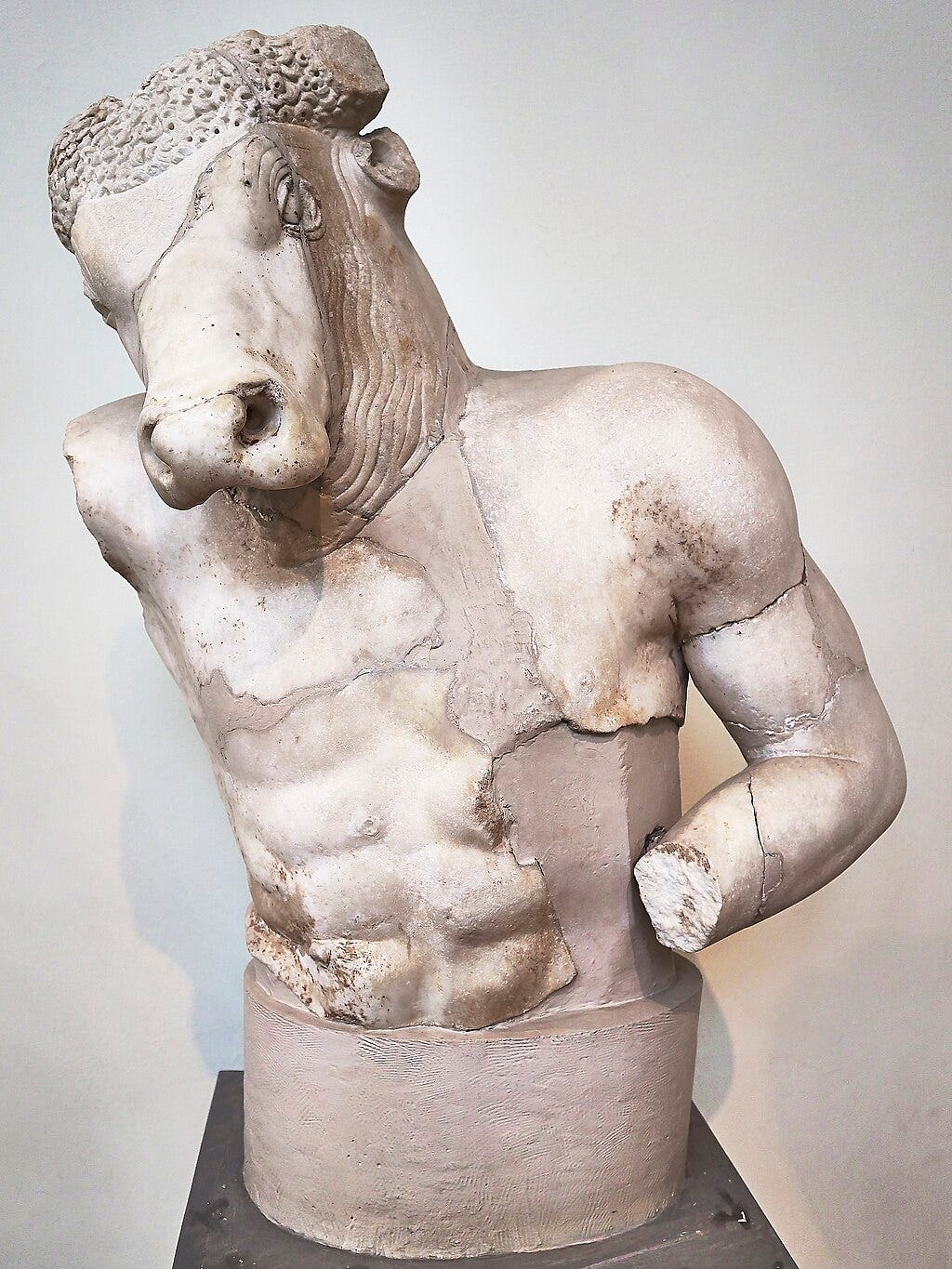
After reading Circe, I remembered reading a chapter about the minotaur in the book The Flowering Wand: Rewilding the Sacred Masculine by Sophie Strand, and so I picked it up again. Sophie Strand, for those of you who aren’t familiar with her work, is a writer who I greatly admire, as her work intertwines myths from religion and spirituality with ecology in a beautiful, poetic way. She’s known as an eco-feminist, and she digs deep into the pre-history and potential ecological origins of myths and stories that we take for granted. She reminds us, in all her work, that:
“When we look at Greek myths—chock-full of monsters, rape, pillage, and heroic valor—we have to remember that many of these myths are translations of older stories, or at least fusions of two competing mythologies: one focused on nature reverence and mother goddesses, and the other characterized by violent heroes and a “solarization” of gods and sacred symbols. The lunar realm of the labyrinth lies, palimpsest-like, under the sunlit girth of Mount Olympus, flickering in and out of the Greek pantheon. It didn’t disappear when the Indo-Germanic tribes subjugated the earlier Mediterranean populations. But, deracinated and replanted into a new, violent mythological ecosystem, earlier gods became murderous monsters, and goddesses withered into helpless princesses.”
She goes on to look at the Minotaur myth from the perspective of the Cretans, rather than from the perspective of the later Greek, Roman, and modern tellings. From a time when bulls were considered sacred, not simply scary or docile. I’ll read a passage from the chapter of The Flowering Wand about the cult of the bull now, called “The Minotaur Dances the Masculine Back into the Milky Way”. It’s beautiful.
Let us look again at the Minotaur myth. And let us look closely at what archaeologists and historians have managed to reconstruct about life on Crete, a culture that Riane Eisler asserts was the healthy precursor to patriarchy. “One of the most striking things about Neolithic art is what it does not depict,” she observes. “For what a people do not depict in their art can tell us as much about them as what they do.”4 Prior to the fall of Minoan culture, Crete had no fortified walls. Most importantly, there are no known depictions of violence or war in its extensive offering of art.
Instead, nature in all its wild fecundity is depicted in frescoes, mosaics, drinking vessels, statues, and seals. Spirals, snake-evocative chevrons, vegetation, and animals dominate the imagery. Women conduct rituals bare-breasted. Goddesses are flanked by lions. The few times that men appear, they are shown most often in positions suggesting awe and reverence, lifting their arms to a goddess or animal. Death is not depicted; neither is suffering. Physical pleasure, bulls, lunar reverence, communion with nature, and feminine divinity are prevalent. But I sense that the dominant theme here is not an object but the fluid connectivity between these symbols. Minoan culture—the origin of the Minotaur—is characterized by movement, by dance itself.
Cretan scholar Nikolaos Platon, in his Guide to the Archeological Museum of Heraclion, muses about Minoan culture: “Motion is its ruling characteristic; the figures move with lovely grace, the decorative designs whirl and turn, and even the architectural composition is allied to incessant movement become multiform and complex.” Nowhere is this better displayed than in the many images of the “bull dance,” in which young Cretan women and men appear to leap and play with bulls. Some have speculated that this is part of a ritual sacrifice, ending with the slaying of the bull as a surrogate for a lunar king. Others postulate that the dancers themselves were the sacrifice, gored by the bull’s lethal horns. But nowhere in the imagery is there blood or death. What we have is dance. Cretan culture is essentially kinetic. Divinity is reached not through heroic individualism but through connective, dynamic play. God does not dwell in the leaping youth or the charging bull but is constituted interstitially between the moving figures. The dance itself is the divine.
The Minotaur, then, is a dancer. His horns, like those of the sacred bull, echoed the shape of the crescent moon and the lunar rhythms that welcome both light and dark. The Minotaur was the god of mutability and movement. He represented the fluid, pleasureful interface between human beings and the animate world of everything else.
When Theseus slays the Minotaur, he is not slaying a monster. He is slaying an entire culture—a Cretan culture dominated by the image of a feminine divinity, flanked by lions and bulls, celebrating epiphanic communion with the natural world.In the same way, Apollo, god of order and sterility and reason, god of the left brain, kills Python, the serpent who presided over the Oracle at Delphi, son of the mother earth goddess Gaia. Snakes are traditionally symbols of the goddess.5 They are literally close to the earth, pressing their whole kinetic, shivering life force against her. In mythology, we can see the slaying or denigration of a snake as a nod to the destruction of partnership societies, nature worship, and goddess devotion.
I just love Sophie Strand’s writing, and I love looking at the symbols and signs of the Zodiac as multidimensional, with myths hidden within myths hidden behind other myths. I find it a beautiful way to always learn more from the stars, and from history and before history, and from our ancient relationships with ecology that led us to creating the stories that are told today.
The theme of this story, to me, is a retelling of humanity’s relationship with nature. For the past couple thousand years, we have been passed down stories about heroes controlling nature in one way or another, about swords slashing down dragons, about making our marks to contain wild and uncontrollable elements of the world, about how the earth doesn’t know best, but humans know best.
Strand continues:
Who is the monster of today’s legends? Today, we see a surfeit of media coverage devoted to weather and climate events. Has the biosphere become the monster? Every attempt to create weather- or climate-regulating technology, rather than adjusting and halting our own abysmal behaviors, posits Earth as a monster and humankind as the “heroes” who must control her and tame her and save her. Technonarcissists are the new Marduk. The new Theseus. They want the myth of progress to subsume the older (although newly investigated in the realms of quantum physics and glacial ice coring) chaos of emergent systems and biospheric intelligence. Earth doesn’t know best, our cultures insist. We know best. And we must progress ever onward toward greater control.
Before his Greek bastardization into an anonymous monster, the Minotaur had a name: Asterion, or “starry one.” His name may have referred to the constellation Taurus or to the rising of Sirius, an event that is correlated to Cretan festivals and sacred mead making.7 So when we think of the Minotaur in the labyrinth, perhaps we are really seeing a solar system. The Minotaur is the guiding star. The labyrinth’s winding courses are the paths of planets, objects, beings, galactic dust, caught in the divine pull of a horned nucleus.
Despite the preponderance of labyrinth myths and images, no remains of a labyrinth have ever been located in Crete. I want to offer another interpretation: The labyrinth was never a static object or a place. It was never a stone corridor. Instead, it was an event. It was a ritual dance to honor the bull and the annual rising of certain constellations. Each “passageway” was a chain of human hands, a serpentine gyration of gestures. The labyrinth was only ever the sacred relationship between people dancing—ecstatically, kinetically—inscribing the patterns of the sky into the soft dirt of the ground.
If the Minotaur offers the masculine anything, it is the healing power of playful, expressive movement. The kind of movement that understands it is always in dialogue with other animals, the weather, the texture and slope of the landscape between our toes. Let the masculine learn how to dance again. And like the starry Asterion, the more we dance, the more people will be attracted into our orbit of participatory, exultant celebration.
Finally, let the Minotaur stand as a reminder: There are no monsters. Only bad rewrites of forgotten stories.
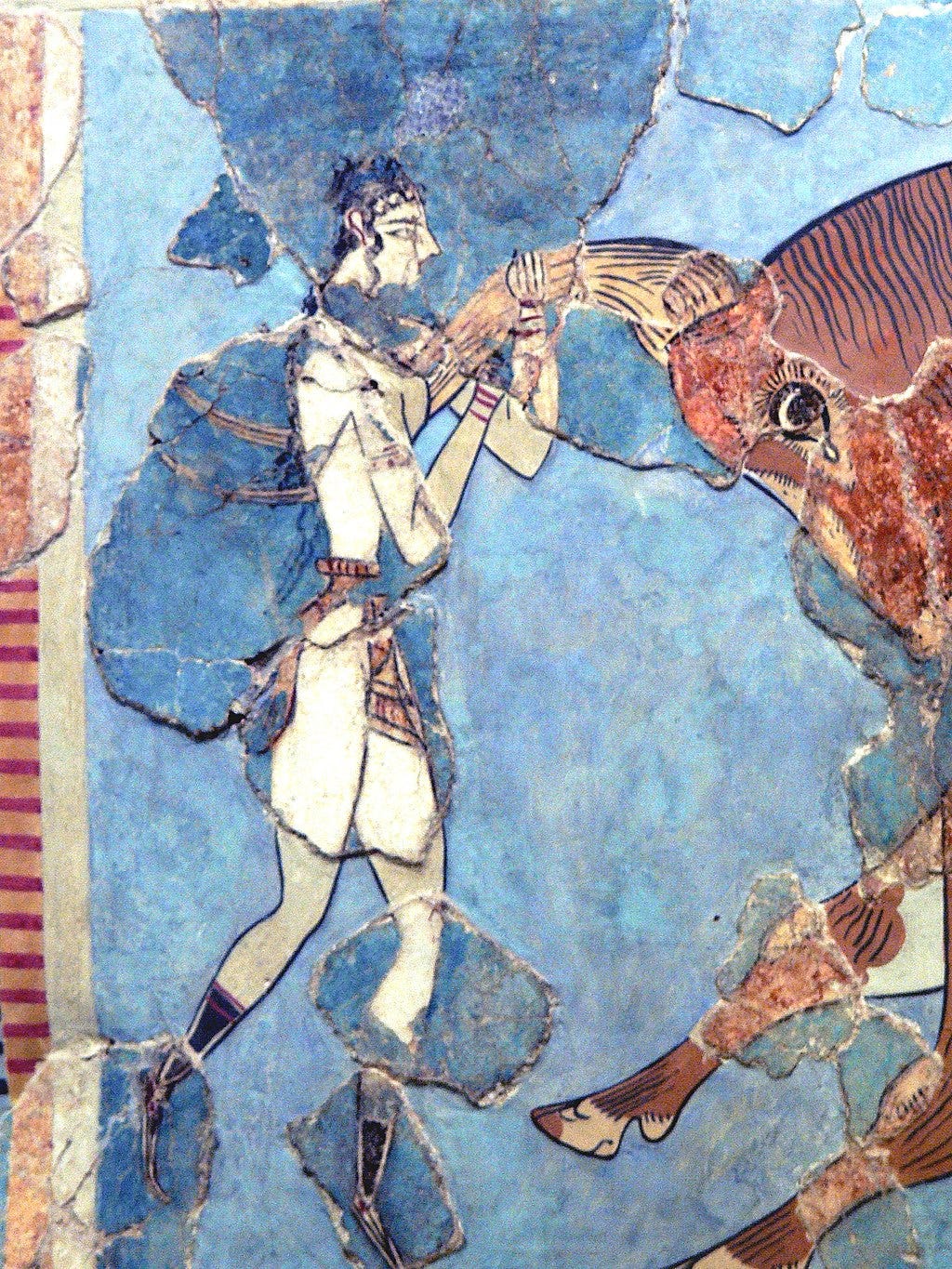
I had to read this to you, because it’s not only relevant to the new moon in Taurus this week, but also to the Human Design Gate and I’Ching Hexagram that the sun is transiting through right now as well: The Receptive.
The Receptive
The Taurus new moon highlights the fertility and fecundity of the earth, and the I’Ching Hexagram or Human Design Gate number 2 is right on target with that symbolism. Hexagram 2 is called The Receptive, and it is composed of two of the same Trigrams, the 3 broken yin-lines that represent Earth. As Earth over Earth, it is the most YIN hexagram out of the 64 in the I’Ching. It sits across the wheel from Hexagram 1, which is 6 solid lines, and the most YANG hexagram, known as Heaven over Heaven or “The Creative”.
Earth over Earth, The Receptive, is telling us this week to submit, to receive, to relax into the world around us. Like I mentioned last week, our culture, especially here in the west, is very Yang oriented. It rewards creation, and thus we are always creating, always trying to be the hero, always using our swords to cut reality up into something that is seen as valuable.
I consider myself a creative person, and love the power of creation, taking a blank canvas or page and making it into something that carries meaning. But I notice, in my creative work, that if I don’t take time to rest, to be open, to recieve, the creations have no inspiration to manifest out of, no fertile soil to grow from.
It’s amazing how much we forget this in today’s world. I look at the amount of content creators whose content I consume every day on Instagram and Tiktok and Youtube, and see so many complaints about how the algorithm rewards constant creation. You have to post every day to be seen. It’s kind of insane. There is a lot of amazing, funny, quality video and thought leadership on the internet, but it’s such a burnout curve, where people have to flat out quit because they can’t keep up with the pace of constant creation.
We all need time to receive. Not to listen to something with an agenda of thinking about how we could repurpose what is being said into our next creations. Not to take notes and make bullet-points about the most important or relevant details. But simply to receive the totality of the world we are within, letting it flow over us like water, letting the meaning and the details trickle into us through osmosis, rather than by control.
I have recently rediscovered a love for reading. I always loved books- I read a ton of them as a kid, and wrote my own, and listened to audiobooks, and just absolutely loved storytelling. But I recently realized that the way that I’ve been reading for a very long time- probably since high school- is to underline and dog-ear and remember passages so that I could “get the most out of” the book. As a kid, I read books without any intention of my own, without any need to write a paper about them or work them into a theory or talk about an interesting part at a party. As a kid, I just read for the sake of receiving what was on the page, and it was relaxing and fun. Only this year have I begun reading like this again, and it’s been an incredible shift.
Imagine how wonderful it would be if our culture rewarded periods of receiving the same way it rewarded creation? If we’re lucky, some of us have gone on retreats or vacations where the purpose is receiving, but oftentimes even these experiences can become so pressurized to fill up every moment with doing something, making something out of our rest time, that we can’t see the benefit in absorbing what is.
This week, in honor of Taurus season and Gate 2, I encourage you to read for the sake of receiving what’s on the page, and take a walk with no destination in mind, receiving the songs of the birds and the smells of the flowers.
Eden Ecology vs. Relational Ecology
I just got another book in the mail and started reading it, called “Medicine Wheel for the Planet: A Journey Toward Personal and Ecological Healing” written by an indigenous restoration ecologist named Jennifer Grenz. Similarly to The Flowering Wand, it’s about our relationship as humans with the natural world, and how we spend so much time trying to control it or know what’s right that we forget to listen.
A little bit different from the concept of heroes slaughtering dragons, Grenz talks about the “do good” mentality of restoration and conservation ecologists as equally nefarious. She shares many stories about the party line of restoration ecologists, which is to identify invasive species, remove them, and plant native plants in their place, to restore the ecosystem to its “pure” natural state. She shares about how so many of these projects end up in failure.
Grenz calls this type of ecology “Eden” ecology”, an ecology with notions of perfectionism of the environment. She writes:
”Modern ecology is rooted in the perfect creation of Earth by God who later added his perfect human creations, Adam and Eve, in the image of Himself. They resided within the Garden of Eden with the intention to multiply, to steward the earth, all in complete obedience to God, until that fateful day. Their fall from grace was the impetus for the lifelong human quest of restoration and a return to Eden…. where the ultimate goal is to restore, to put things back the way they were when they were perfect. [This] has given rise to an ecology based on dichotomies, hierarchies, and notions of perfectionism. All of which are hindering our progress in healing the land at this critical juncture in our climate history”.
She talks about this underlying mythos of modern ecology not as purposeful, but as something that has arisen from the underlying colonial story of conquest. In something as “good” as restoration ecology, there is still a narrative that we must be in control , that since we humans were the destroyers of ecosystems, we must also be the ones to actively right our wrongs by putting things back the way they used to be, like a ‘human environmental apology tour’, as she puts it. So many of these failed because once invasive species were removed and native plants were planted, there wasn’t a plan in place to tend to these new plants, or to choose the right environment for them in the first place. It was often a set-it and forget-it, fix-it and leave it kind of mentality.
In her work, she found that search for the capital T truth of what is perfect always leaves human relationship out of the equation. Whether you’re killing a dragon for once or for good, or trying to restore the habitat and reintroduce a species so that dragons may live once again, the issue with the mentality of Humans-as-Creators (or Active-Yang-Controllers), is that they are not an ongoing part of the ecosystem. We create conservation areas where people are not allowed to go, because of the fear that they may harm it, but we are also not allowing the reciprocity of humans to tend to it.
Grenz notes in this book that this Eden ecology of putting things back to perfection and leaving out human relationship is harmful to both plants and people, because of this root story of needing to control the environment in order to bring it back to perfection. “We have been creating environmental facades eventually doomed to fail without us.”
She continues, “An indigenous worldview embraces the Great Mystery, allowing us all to exist in a world of small-t truths. We don’t have to have the answers as we are free of absolutes. Our stories are meant to evolve to fit our current reality. They are not one-size-fits-all; their dynamic nature makes them very much alive. There is no need to double down on an old story to assert it’s relevancy; it is just time for altered or new stories as we learn more”.
I’m talking about this in relationship to Taurus season and Gate 2, because there is so much we can learn from the earth herself, and like Ferdinand the Bull, so much we can learn from receiving the present moment, without putting our agenda onto it. What is the only way to learn more, to create new stories? To first listen. To receive. Then it will become clear that there is no separation between ourselves and the land when it comes to healing.
The I’ching, Human Design Mandala, Zodiac, the Wheel of the Year and the Medicine Wheel are all circles. And to me, the coolest thing about circles and cyclic thought is that there is always a polarity, an opposing yet unifying energy across the circle. It’s really easy and clear to look at this this week, with the sun in Maximum-Yin Gate 2 opposite on the wheel from Maximum-Yang Gate 1. Receiving and listening to the earth in polarity with creatively acting is a relational action, just as all of the polarities are in the wheel. In order for a wheel to move, there must be action and response, creation and reception, and that is something to contemplate this week. Hopefully you can do it as you sit under a tree and receive the transient beauty of the swaying branches, the drifting clouds, and the sliver of the Taurus new moon rising over the horizon.
On Friday through Tuesday the sun will be transiting through Gate 23: the Gate of Assimilation, known as Splitting Apart in the I’Ching. If we have done our job and truly allowed ourselves to receive this week in Gate 2, Gate 23 this weekend will give us the potential to communicate radical ideas and initiate transformation through explaining complex concepts in a clear and concise manner.
I find that when I have given myself time away from creation, and been in receiving mode, when I do get back to the computer or the drawing board, I have much more amazing insights and much more clarity than if I had been trying to please the algorithm or someone else’s deadlines through constant creation, so that’s something to think about as we transit from the Gate o Receiving to the Gate of Assimilating complex ideas.
All the love this week, my friends! As always, your likes and subscribes mean so much to me, as do your comments and feedback about how this week’s energies are showing up for you. You can find me on Instagram at cyclesoftimepodcast, and we also have a Cycles of Time Facebook group for community discussion about the weeks energies too, and I’d love it if you’d join!
If you’re listening and would like to receive this this as a transcript plus audio every Monday in your inbox, you can subscribe for free at astrosomatics.substack.com.
Have a beautifully receptive week ahead, and I’ll catch you next Monday,
xo
Alison




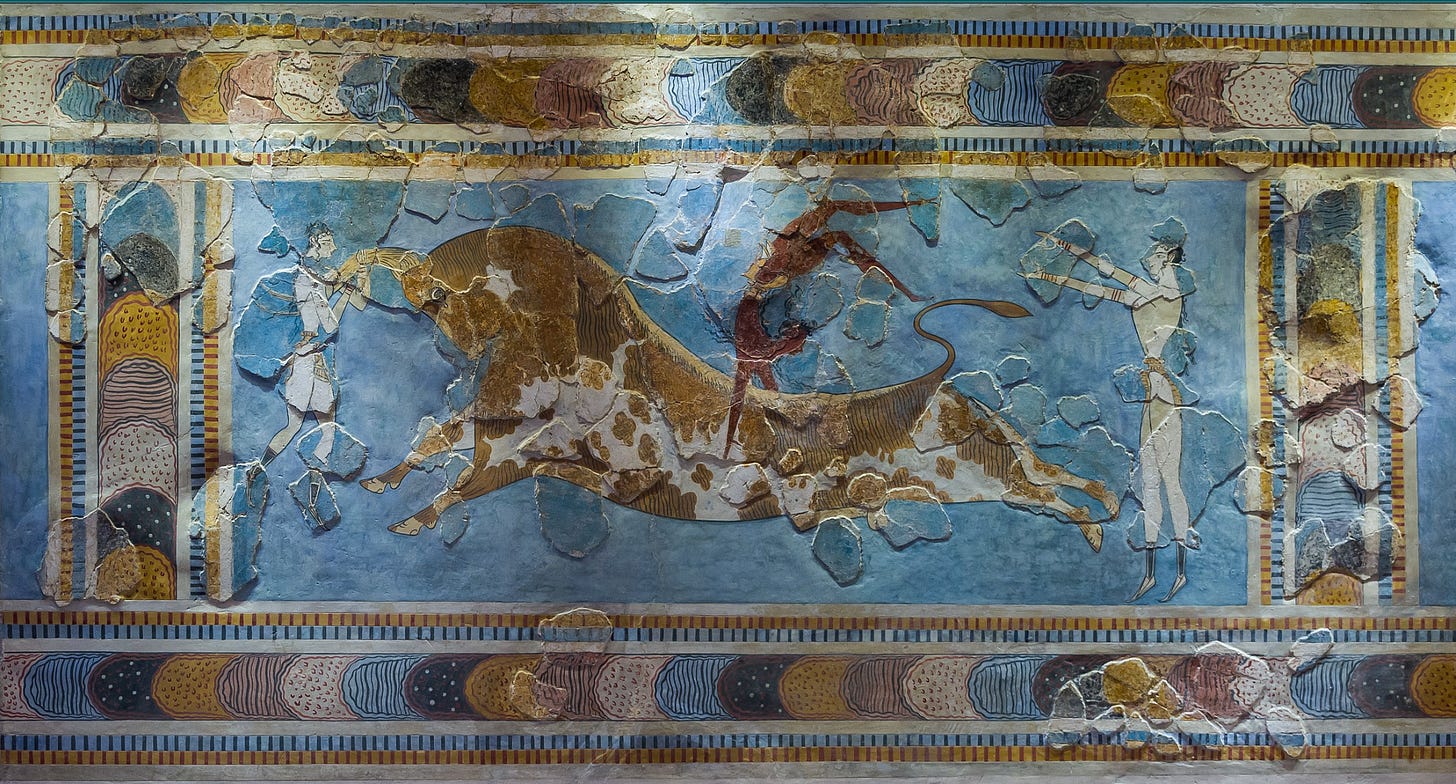

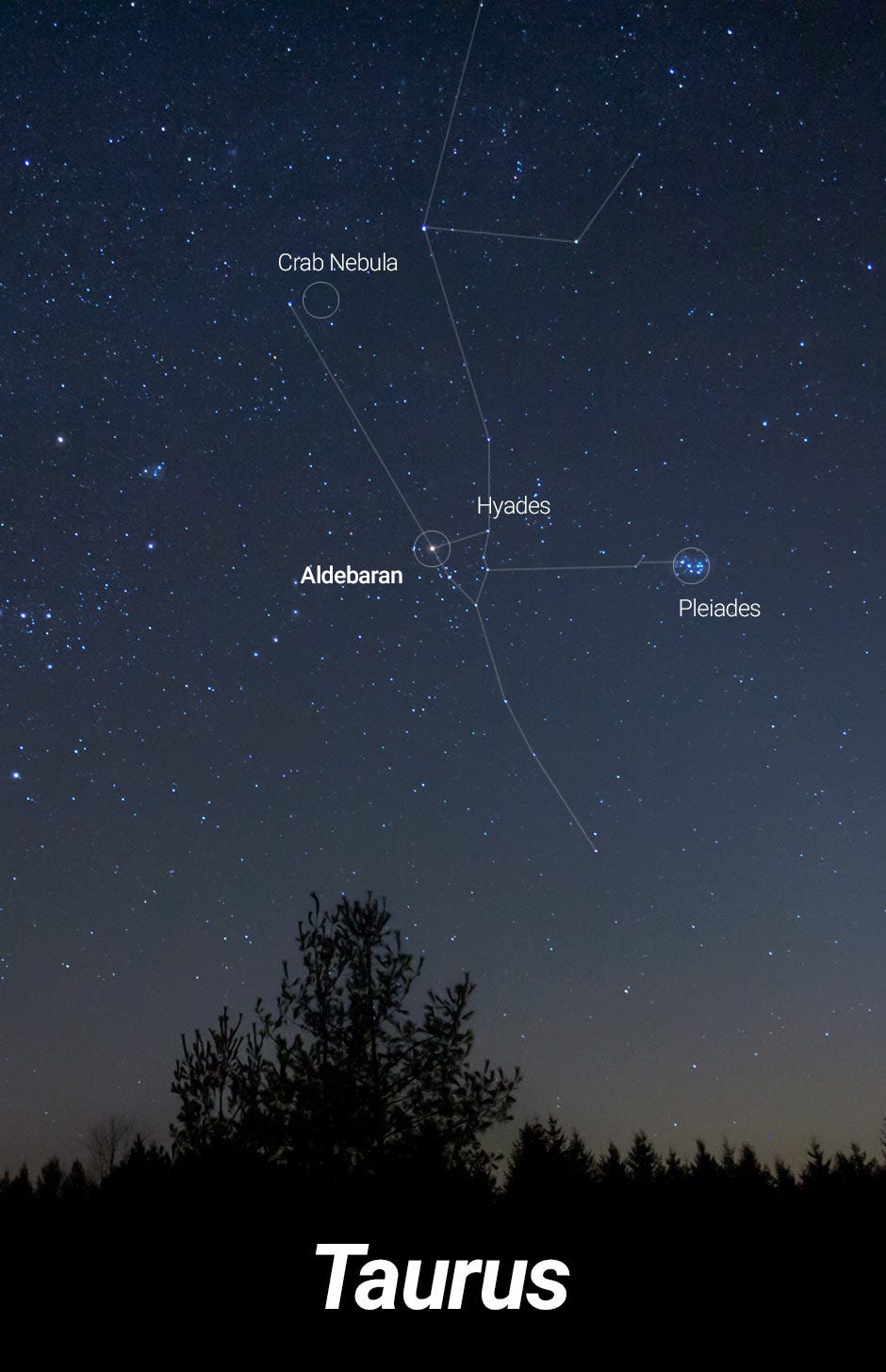

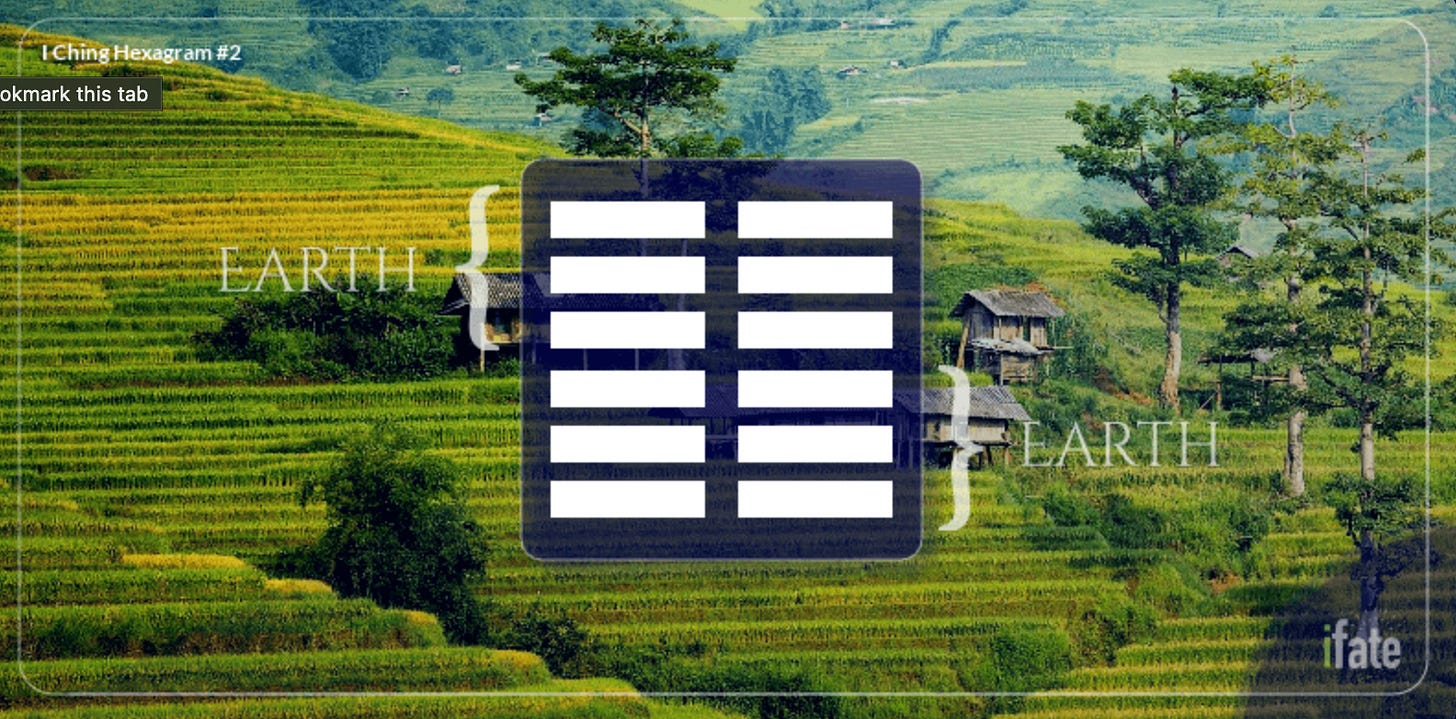
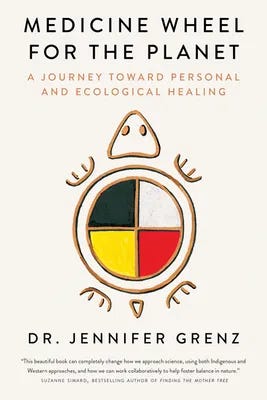


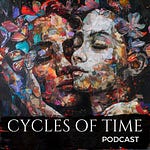


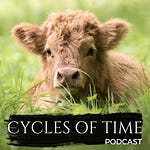
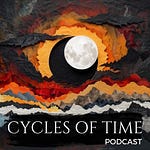
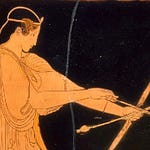
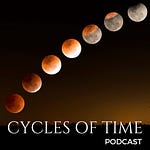
The Taurus New Moon and the Power of Receiving: Weekly Forecast for May 6-12